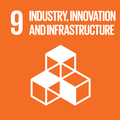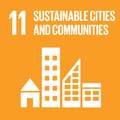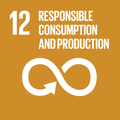Ostara recovers excess nutrients such as phosphorus and nitrogen from wastewater treatment plants and converts them into fertilizer pellets, helping to reduce demand for limited phosphate resources.
Ostara helps to protect water resources by improving how cities manage their wastewater. The company’s nutrient recovery technology provides a closed-loop solution to wastewater, by removing excess phosphorus and nitrogen from municipal and industrial wastewater streams. The process converts these recovered nutrients into crystalline fertilizer pellets for improving crop growth. According to the company, their fertilizer is more resistant to leaching under heavy rain than conventional fertilizers, thus they help to prevent algal blooms and eutrophication in surrounding freshwater bodies.
The Ostara process represents a new paradigm in sustainability for treatment plants around the world.
F. Phillip Abrary – President and CEO, Ostara Nutrient Recovery Technologies
According to Ostara, the company’s technology can remove up to 90% of the phosphorus and 40% of the ammonia in a wastewater treatment plant. This helps wastewater treatment plants to meet increasingly strict discharge limits. At the same time, the company produces valuable fertilizer for commercial use. The company’s fertilizer production process is less carbon-intensive than traditional fertilizer manufacturing processes, and the fertilizer returns nutrients to their most beneficial use: growing crops.
Ostara’s solution has been adapted by 14 cities around the world, including the largest nutrient recovery facility in the world at The Metropolitan Water Reclamation District’s Stickney facility in Chicago, in their quest to become a sustainable city and community.
Why you should care
Phosphorus is a key crop nutrient, but it is also a dwindling mineral resource. Conventional fertilizers are relatively inefficient at delivering phosphorus to plants, and are prone to leaching into nearby waterways, where they can cause algal blooms and oxygen depletion. Rather than viewing municipal and industrial wastewater as waste, Ostara sees it as a valuable source of nitrogen and phosphorus.
How the Global Goals are addressed

Industry, Innovation, and Infrastructure
The Ostara system has a payback period of 3 to 7 years and provides a built-in revenue stream to cover operating costs, making it an attractive investment for wastewater treatment plants.

Sustainable Cities and Communities
As more and more people move from rural to urban areas, processing wastewater will become increasingly important. Ostara’s solution offers a sustainable and economical choice for cities around the world.
Responsible Consumption and Production
Ostara’s fertilizer offers a safe and natural alternative to toxic chemicals for use on gardens, lawns and crops, and helps responsibilize consumers.

Climate Action
Due to the low-energy production process, every ton of Ostara’s fertilizer offsets roughly 10 tons of CO2 compared to conventional fertilizers, according to the company.

Life Below Water
Ostara’s crystalline fertilizer pellets minimize nutrient leaching into groundwater and nearby waterways, thus reducing algal blooms and eutrophication that harm aquatic life.



